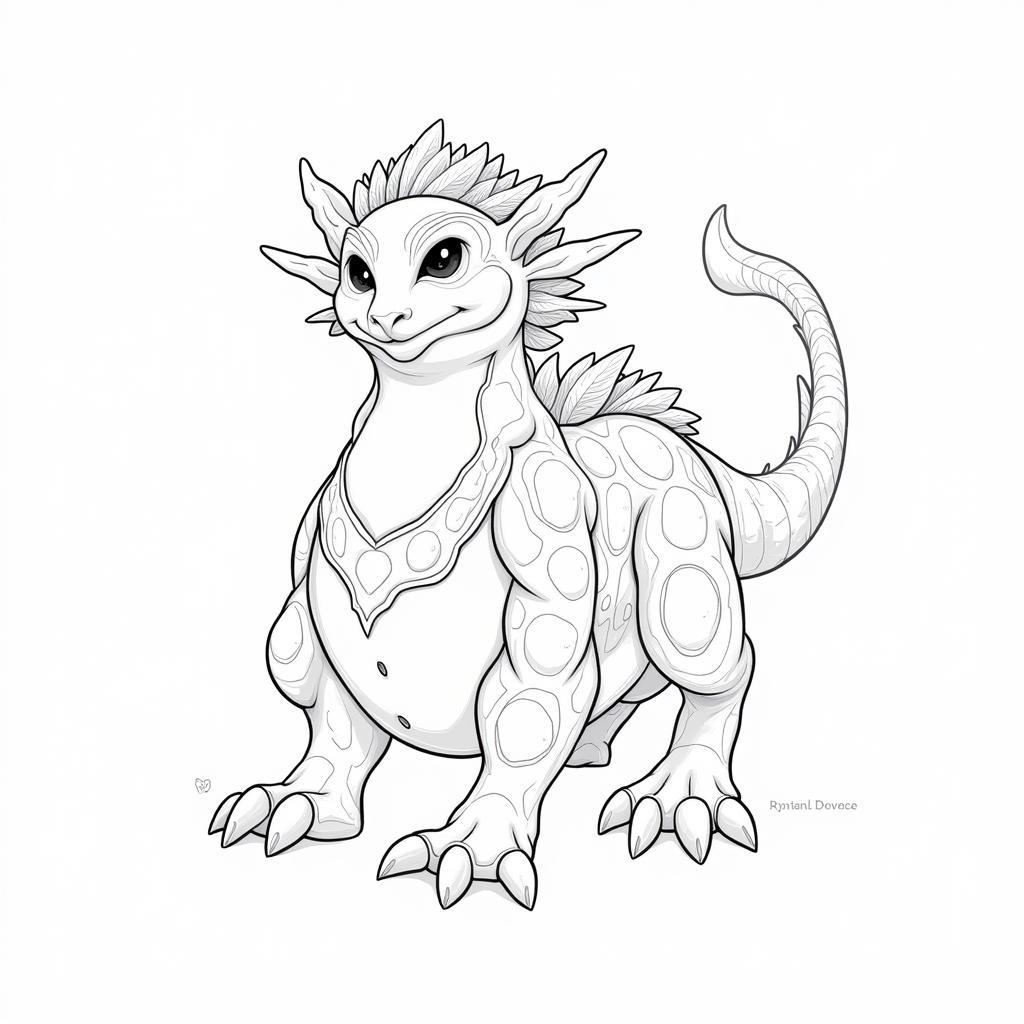Learning how to draw coloring pages opens up a world of creative possibilities. Whether you’re a seasoned artist or just starting, mastering the art of drawing for coloring can be a rewarding and enjoyable experience. From simple doodles to intricate designs, the power to create personalized coloring pages lies within your grasp. This comprehensive guide will provide you with the tools and techniques needed to embark on this exciting artistic journey. Check out our guide on how to print coloring pages for even more tips!
Understanding the Basics of Drawing for Coloring
Before diving into complex illustrations, it’s essential to grasp the fundamental principles. Drawing for coloring differs from traditional drawing in its emphasis on defined outlines and clear spaces for coloring. This means focusing on creating strong lines and avoiding excessive shading or detail that might obscure the coloring process.
Line Weight and Clarity
Line weight plays a crucial role in creating effective coloring pages. Consistent and bold lines ensure the colored areas stay within the intended boundaries. Avoid faint or sketchy lines that can make coloring difficult. Experiment with different pen thicknesses to find the style that suits you best.
Shape and Form
Understanding basic shapes and forms is crucial for constructing more complex drawings. Start with simple shapes like circles, squares, and triangles, then gradually combine them to create more intricate designs.
Composition and Balance
A well-composed drawing is visually appealing and engaging. Consider the placement of elements within the frame to create a balanced and harmonious composition. Avoid overcrowding the page, leaving ample white space for coloring.
 Basic Shapes Coloring Page
Basic Shapes Coloring Page
From Simple to Complex: Building Your Skills
Once you’ve mastered the basics, you can begin exploring different drawing techniques and styles.
Drawing from Observation
Observational drawing is a great way to enhance your skills. Choose everyday objects and try to recreate them on paper, paying attention to their shapes, proportions, and details. This practice will improve your ability to translate real-world objects into coloring page designs.
Drawing from Imagination
Unleash your creativity by drawing from your imagination. Think of characters, scenes, or patterns and bring them to life on paper. Don’t be afraid to experiment with different styles and approaches.
Using References
References can be incredibly helpful, especially when drawing complex subjects. Use photographs, illustrations, or even real-life objects as inspiration for your coloring page designs.
 Drawing from Imagination Coloring Page
Drawing from Imagination Coloring Page
Adding Details and Enhancing Your Coloring Pages
While simplicity is key in coloring page design, adding thoughtful details can elevate your creations.
Patterns and Textures
Incorporating patterns and textures can add visual interest to your coloring pages. Experiment with different line types, dots, and other simple patterns to create unique textures. You might find some inspiration in how to turn an image into a coloring page canva.
Adding Depth and Dimension
Create a sense of depth by using varying line weights and adding simple shading. Thicker lines can suggest shadows, while thinner lines can represent highlights.
Creating Themes and Stories
Develop themes and narratives within your coloring pages to make them more engaging. For example, you could create a series of coloring pages based on a favorite story or a collection of nature-themed illustrations.
Tools and Resources for Drawing Coloring Pages
The right tools can make a significant difference in your drawing experience.
Pencils and Pens
Choose pencils and pens with varying thicknesses to achieve different line weights. Experiment with different types of ink to find one that suits your style.
Paper
Use smooth, thick paper that can handle various coloring mediums without bleeding or tearing.
Digital Tools
Explore digital drawing programs and apps that offer a wide range of tools and features for creating coloring pages. Perhaps creating a brighter year mini coloring book will pique your interest.
Conclusion
Learning how to draw coloring pages is a journey of creativity and self-expression. By mastering the fundamental principles, exploring different techniques, and using the right tools, you can create unique and engaging coloring pages for yourself and others to enjoy. So, grab your pencils, unleash your imagination, and start creating your own colorful world!
FAQ
- What are the best pens for drawing coloring pages?
- How do I create a balanced composition in my drawings?
- What are some good resources for learning how to draw?
- How can I add depth and dimension to my coloring page designs?
- What type of paper is best for coloring pages?
- How can I turn a photo into a coloring page?
- Where can I find free coloring pages online?
Scenarios
Scenario 1: A parent wants to create personalized coloring pages for their child. They can use the techniques outlined in this article to draw their child’s favorite characters or create scenes from their favorite stories.
Scenario 2: An aspiring artist wants to improve their drawing skills. Practicing drawing for coloring can help them develop a better understanding of line weight, shape, form, and composition.
Scenario 3: A teacher wants to create educational coloring pages for their students. They can incorporate themes related to the curriculum or create coloring pages that reinforce specific learning objectives.
Further Exploration
Explore more drawing techniques with our guide on how to draw a cool star 3d fire easy coloring. Or, if you’re looking for ready-to-color options, check out our A for apple coloring page.
Contact Us
For any assistance, please contact us at Phone Number: 0373298888, Email: [email protected], or visit us at 86 Cau Giay, Hanoi. We have a 24/7 customer support team.
